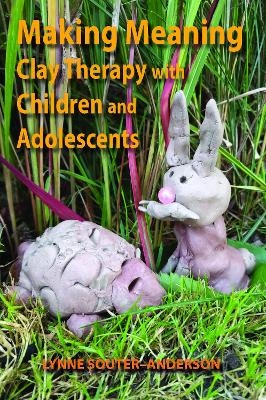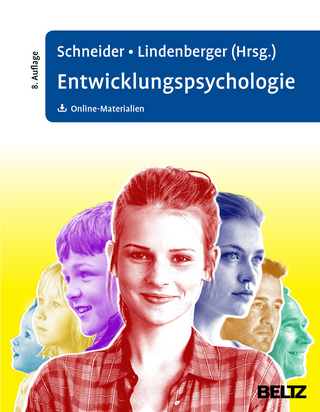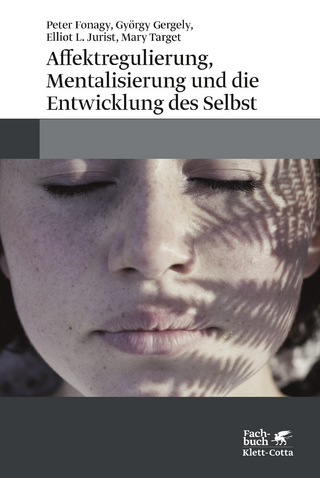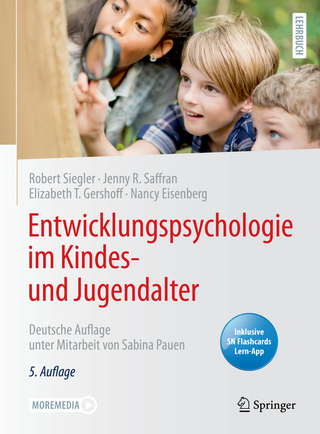
Making Meaning
Archive Publishing (Verlag)
978-1-906289-65-2 (ISBN)
Clay, Touching What?: The Use of Clay in Therapy (2010), gave credence and credibility to using clay in therapy. It was a
pioneering book in the field of the creative arts therapies and gave a broad perspective on working in this modality with all age groups ; This new book is written for already qualified professionals who want to add the use of Clay Therapy in their work with children and adolescents. It is a hands-on book for practitioners and easy to read. However, the application of clay therapy in this specialist field requires appropriate additional training ; Lynne’s book is a significant addition to the small but growing library of books on the market about specialist therapeutic approaches with young children and adolescents. Play Therapy UK (PTUK)’s research analysis of over 300,000 therapeutic sessions using the ‘toolkit ‘(sand, music, clay, art/drawing, puppets, movement,
drama, therapeutic story, creative visualisation etc.) has shown that clay is the fifth most used medium in play therapy sessions. It is therefore an important medium to offer to children and adolescents to support their healing process ; Lynne achieves a good balance between the application of theory and the actual process, which is always valuable for the reader. This is especially well demonstrated in Chapter 1, ‘Clay Therapy: Theoretical Underpinning of Clay Therapy’, in which the author explains her own theoretical basis, ‘The Theory of Contact: Physical, Emotional, Spiritual and Metaphorical’. She uses the analogy of the ’five lenses’ to demonstrate the stages of immersion and discovery in the clay therapy process, and includes an invaluable diagram to clarify her theory about the evolving nature of the process ; For me the book comes really alive through the ten case studies, which demonstrate how clay therapy has been used with the younger clients and adolescents, a client group that can prove to be difficult to reach and work with in therapy. The illustrations used deepen the experience and understanding of the process for the reader. Throughout the case studies glimpses of the quality of the therapist’s presence are seen, because she has the courage to show her own process thereby offering authenticity to the work ; To be able to do this effectively specialised training is required There is still very little published in the field, but it is heartening and exciting to see recent research initiatives described in the master’s dissertations produced by students at the Academy of Play and Child Psychotherapy and Cambridge University, which are included towards the end of the book ; Lynne’s book is a ‘must-read’ for all creative play and arts therapists.
Dr Lynne Souter-Anderson is Director of Bridging Creative Therapies Consultancy and is in private practice in Cambridgeshire, UK, where she offers child, adolescent and adult psychotherapy, clinical supervision and consultancy, as well as delivering clay therapy workshops in both the UK and overseas ; She has extensive experience and knowledge of working therapeutically through the arts with both children and adolescents ; Lynne’s Doctorial research was carried out at the Metanoia Institute, London ; Her first book, Touching Clay, Touching What?: The Use of Clay in Therapy, was first published in 2010. This book, her second, was first published in 2015. Her third book, Seeking Shelter, Seeking Safety: Clay Therapy with Families and Groups, was published in 2019.
Reviewsi
Dedicationix
Acknowledgementsxi
Contentsxiii
Forewordxviii
Prefacexx
Part One: Clay Therapy
Chapterpage
1Clay therapy1
Introducing clay therapy
How clay therapy works
Who benefits from clay therapy?
What is clay?
Theoretical Underpinning of Clay Therapy
2Clay therapy equipment
Types of clay
Storage of Clay
Recycling clay
Useful equipment when working with clay
3Construction methods
Non-directive use of clay with children
Using clay in a more directive approach with adolescents
Basic techniques
Thumb pots & Pinch pots
Coil-building
Tiles & Plaques
Slab building
Sculpting
Modelling
The human figure: Proportions in sculpture
4Working with clay creations and processes
Storying
Titling and Metaphor
Personifying
Symbolism
5Developmental Phenomena with Children and Adolescent in Clay Therapy
Descriptors for Children’s Developmental Modelling and Sculptural Skills with Clay (2012)
Broader Phenomena
Choice of clay colour
Part Two: Clay Therapy with Children – Case Studies
Chapterpage
6Toileting troubles: Evie (age 5)
Reasons for selecting this case
Introduction
Case background information
Therapeutic work
Discussion
7Parental separation: Mattie (age 7)
Reasons for selecting this case
Introduction
Case background information
Therapeutic work
Discussion
8Travelling family issues: Danielle (age 8)
Reasons for selecting this case
Introduction
Case background information
Therapeutic work
Discussion
9Kinship fostering: Bradley (age 9)
Reasons for selecting this case
Introduction
Case background information
Therapeutic work
Discussion
10Bereavement: Katriona (age 10)
Reasons for selecting this case
Introduction
Case background information
Therapeutic work
Discussion
Part Three: Clay Therapy with Adolescents – Case Studies
Chapterpage
11Parent Imprisonment: Logan (age 12)109
Reasons for selecting this caseIntroductionCase background informationTherapeutic workDiscussion
12Bullying issues: Jodie (age 13)121Reasons for selecting this caseIntroductionCase background informationTherapeutic workDiscussion
13Eating conditions: Libby (age 14)137Reasons for selecting this caseIntroductionCase background informationTherapeutic workDiscussion
14Shame and sexual matters: Dylan (age 15)153Reasons for selecting this caseIntroductionCase background informationTherapeutic workDiscussion
15Depression and family relocation: Raz (age 16)163Reasons for selecting this caseIntroductionCase background informationTherapeutic workDiscussion
Part Four: Clay Therapy Initiatives
Chapterpage
16Recent Research into the use of Clay Therapy175
To study the use of clay in a series of therapy sessions
with primary school boys of African heritage who
demonstrate symptoms of oppositional defiance.
Researcher: Eileen Braham (2012)176
An evaluation of specific behaviour patterns
following a series of group clay sessions with boys
aged ten years old exhibiting symptomology of
dyslexia, and displaying oppositional defiant
behaviours in the classroom.
Researcher: Caroline Drew (2012)180
To evaluate the effects of a series of clay therapy
sessions on girls aged between 8 and 9 demon-
strating symptoms of generalised anxiety disorder,
as defined in the DSM-IV-TR section 300.02, in a
classroom setting.
Researcher: Susannah Bradley (2012)181
Is making pottery on iPads therapeutic? Exploring
children’s feedback about their play experience.
Researcher: Donna Jones (2013)185
Bringing the outside in. An exploration of the
playful use of clay and natural materials on the
self-esteem of young children.
Researcher: Louise Burton (2013)187
Summary189
17Specialist Training Programmes in using Clay: Clay
Conversations, Clay Therapy and Supervision of
Clay Therapy & Conversations191
AppendixTheory of Contact: Physical, Emotional,
Spiritual and Metaphorical195
Bibliography201 Index205
| Erscheinungsdatum | 05.03.2024 |
|---|---|
| Zusatzinfo | 10 colour illustrations and diagrams |
| Verlagsort | Morton |
| Sprache | englisch |
| Maße | 156 x 235 mm |
| Gewicht | 426 g |
| Themenwelt | Geisteswissenschaften ► Psychologie ► Entwicklungspsychologie |
| Medizin / Pharmazie ► Medizinische Fachgebiete ► Psychiatrie / Psychotherapie | |
| ISBN-10 | 1-906289-65-4 / 1906289654 |
| ISBN-13 | 978-1-906289-65-2 / 9781906289652 |
| Zustand | Neuware |
| Informationen gemäß Produktsicherheitsverordnung (GPSR) | |
| Haben Sie eine Frage zum Produkt? |
aus dem Bereich


